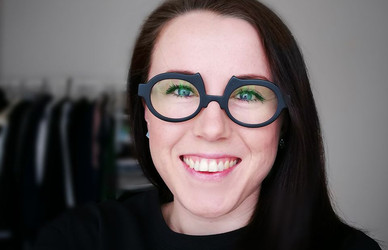Police, uniform, handbag!
This is one of the conclusions that was reached in sustainability project between the National Police of Denmark and Design School Kolding.
Every year, the police buy more than 60,000 uniform parts, and similar quantities end up in the incinerator every year when the police exchange their uniforms.
Sixteen tonnes of textiles go up in smoke – textiles that might have been reused. The National Police has decided to find a solution to this problem as part of its desire to increase its focus on responsible and sustainable procurement of textiles.
Therefore, the Police Group Procurement has initiated a collaboration with Design School Kolding and Lifestyle & Design Cluster with the aim of demonstrating options for recycling and reusing police uniforms. The collaboration has been launched with a mini-project, where the case study is a patrol jacket that is currently being replaced.
- The objective of the project is to visualize that the textiles we, the police, dispose of every year as waste are, in fact, valuable resources that could have been used in a different context, and could thus have created value. Obviously, we must investigate whether we can do this in a different and smarter way that creates value for both the police and the climate, says Maria Pagel Fray, CSR manager for the National Police.
Must not end up in the wrong hands
The majority of the worn-out uniform jackets that the National Police's Group Procurement received for the project from Vestegnen's Police were in very good condition. Safety considerations and the concern that the jackets do not end up in the wrong hands are paramount, and therefore it is not feasible, let’s say, to hand over the jackets to, for example, civilian employees in the police or other public authorities. Hence, the general procedure in the Danish police today is to discard all worn-out uniforms.
Frederik Thrane, the designer affiliated with Design School Kolding's LAB for Sustainability, says:
– When checking the jackets, it was obvious that this is a high-quality product that should optimally be used as it is. However, that is not an option within the framework of the police's current safety regulations, and therefore it is impossible in this project to simply remove distinctions and logos and reuse the jacket in its original form.
The first step in Frederik Thrane's work has been to dissect the jacket meticulously and look at the individual components and pattern segments with the intention of finding new applications:
- There is a technique called laser etching which is used in the denim industry, for example. The technique can significantly change the structure of the textile and the visual expression, and thus change the appearance of the jacket with the aim that non-police trained employees in the police could reuse it – of course, provided that logos and distinctions are removed, explains Frederik Thrane.
From a sustainability perspective, laser etching is far preferable because the 'new product' is so similar to the original. However, the current project has had no available funds to test this procedure.
New products
As an alternative, Frederik Thrane has focused on designing product prototypes with logos to be used internally in the police. Out of two uniform jackets, he designed three handbags, two jackets and one children's hat.
- A project like this does not save the world, but it clearly illustrates that there is a need for the public sector, when signing contracts in the textile area, to take the entire product life cycle into account from the start, and thus consider what design requirements the products should fulfil in order to promote and increase reuse and recycling, says Ulla Ræbild, Associate Professor from Design School Kolding’s LAB for Sustainability:
– The public sector is an important partner for Design School Kolding in terms of driving the market more rapidly in a more sustainable direction. The project does not end here. Going forward, the police and Design School Kolding will look at potentials for reusing or recycling worn-out police uniforms. In dialogue with Design School Kolding, the police will also focus on preparing recommendations for requirements that the police can make in the future when soliciting contracts for uniforms or other products where textiles are included.




